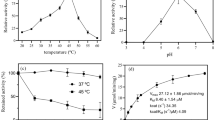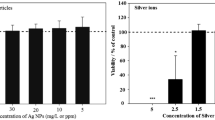Abstract
Urinary tract infection associated with catheters is the most common infection in the hospital environment. The adherence of microorganisms to the surface is a determining factor in colonization and infection. Antiseptics such as chlorhexidine and gentian violet have been shown to be effective against yeasts, as well as having low toxicity and being low-cost. The objective of the present study was to evaluate whether prior treatment of siliconized latex urinary catheters with antiseptics reduces the adherence of yeasts. Two reference strains of C. albicans (ATCC 645448 and ATCC 90028) and six strains isolated from catheter, two each of C. albicans, C. tropicalis, and C. parapsilosis, were used. An in␣vitro study of adherence was carried out with previously treated catheters, in separate experiments of 1 h and 24 h of incubation under continued shaking. The relative hydrophobicity of the cell surface of the yeasts before and after 1 h of exposure to chlorhexidine was determined. The results demonstrated that both treatments were effective in controlling the adherence of yeast to the catheter (P < 0.0001), and that the hydrophobicity of the eight strains significantly increased after contact with chlorhexidine (P < 0.0001). These results suggest that the antimicrobial activity of chlorhexidine and gentian violet reduces the adherence of the microorganisms to the catheter.
Similar content being viewed by others
References
Tamura NK, Gasparetto A, Svidzinski TIE. Evaluation of the adherence of Candida species to urinary catheters. Mycopathologia 2003;156(4):269–72.
Febré N, Silva V, Medeiros EAS, Wey SB, Colombo AL, Fischman O. Microbiological characteristics of yeasts isolated from urinary tracts of intensive care unit patients undergoing urinary catheterization. J Clin Microbiol 1999;37:1584–6.
Maki DG, Tambyah PA. Engineering out the risk of infection with urinary catheters. Emerg Infect Dis 2001;7:1–6.
Colombo AL, Guimarães T. Epidemiology of hematogenous infections due to Candida spp. Rev Soc Bras Med Tropical 2003;36(5):599–607.
Finlay BB, Falkow S. Common themes in microbial pathogenicity. Microbiol Rev 1989;53:210–30.
Ellepola ANB, Samaranayake LP. The effect of limited exposure to antimycotics on the relative cell-surface hydrophobicity and the adhesion of oral Candida albicans to buccal epithelial cells. Arch Oral Biol 1998;43:879–87.
Anil S, Ellepola ANB, Samaranayake LP. The impact of chlorhexidine gluconate on the relative cell surface hydrophobicity of oral Candida albicans. Oral Microbiol 2001;7:119–22.
Thomas L, Maillard JY, Lambert RJW, Russell AD. Development of resistance to chlorhexidine diacetate in Pseudomonas aeruginosa and the effect of a “residual” concentration. J Hosp Infect 2000;46:297–303.
Bhatnagar V, Sundaram KR. Studies on antibacterial properties of gentian violet impregnated silastic. Indian J Med Res 1993;97:206–8.
Douglas LJ. Candida biofilms and their role in infection. Trends Microbiol 2003;11:30–6.
Hawser SP, Douglas LJ. Biofilm formation by Candida species on the surface of catheter materials in␣vitro. Infect Immun 1994;62:915–21.
Chandra J, Kuhn DM, Mukherjee PK, Hoyer LL, Mccormick T, Ghannoum MA. Biofilm formation by the fungal pathogen Candida albicans: development, architecture, and drug resistance. J Bacteriol 2001;183:5385–94.
Cai S, Simionato MR, Mayer MP, Novo NF, Zelante F. Effects of subinhibitory concentrations of chemical agents on hydrophobicity and in␣vitro adherence of Streptococcus mutans and Streptococcus sanguis. Caries Res 1994;28(5):335–41.
Maki DG, Stolz SM, Wheeler S, Mermel LA. Prevention of central venous catheter-related bloodstream infection by use of an antiseptic-impregnated catheter, a randomized, controlled trial. Ann Intern Med 1997;127(4):257–66.
Rupp ME, Fitzgerald T, Marion N, Helget V, Puumala S, Anderson JR, Paul D. Effect of silver-coated urinary catheters: efficacy, cost-effectiveness, and antimicrobial resistance. Am J Infect Control 2004;32:445–50.
Chaiban G, Hanna H, Dvorak T, Raad I. A rapid method of impregnating endotracheal tubes and urinary catheters with gendine: a novel antiseptic agent. J Antimicrob Chemother 2005;55:51–6.
Acknowledgments
This research was supported by Fundação Araucária, Paraná, Brazil. The authors wish to thank Peter Grimshaw and Janet W. Reid for English revision of this article.
Author information
Authors and Affiliations
Corresponding author
Rights and permissions
About this article
Cite this article
Camacho, D.P., Gasparetto, A. & Svidzinski, T.I.E. The effect of chlorhexidine and gentian violet on the adherence of Candida spp. to urinary catheters. Mycopathologia 163, 261–266 (2007). https://doi.org/10.1007/s11046-007-9007-x
Received:
Accepted:
Published:
Issue Date:
DOI: https://doi.org/10.1007/s11046-007-9007-x




